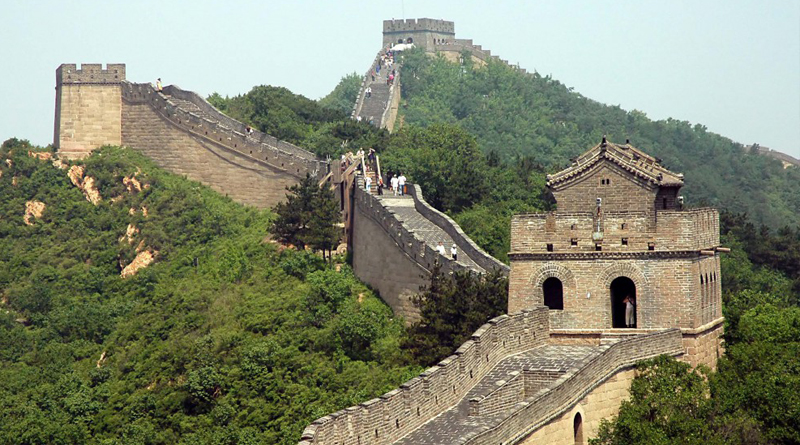Walmart should become India’s battering ram to crack the Chinese market
Walmart’s takeover of Flipkart for $16 billion has made global headlines. It is the largest takeover ever in India. It creates a new global strategy for Walmart, using e-commerce to combat Amazon. Many have welcomed the deal as a flag-bearer for more foreign direct investment (FDI).
However, small Indian retailers continue opposing Walmart’s entry. Leading the outcry has been Swadeshi Jagran Manch (SJM), the economic wing of RSS, which has long opposed multinational corporations (MNCs) and rooted for national champions. The Confederation of All India Traders says it will ask the Competition Commission of India (CCI) to veto the deal claiming it reduces competition.
Trade’s Tirade
BJP’s core support has long come from small traders and shopkeepers, who were hard hit by demonetisation, and then again by the goods and services tax (GST). They say Walmart’s takeover of Flipkart adds up to a triple whammy.
Nobody expects Prime Minister Narendra Modi to veto the Walmart takeover, which has taken place with his knowledge and implicit concurrence. But if BJP is routed in the December state elections in central India and seems to face an uphill battle in the 2019 general election, Modi will come under pressure to cave in to SJM or do something to hobble Walmart and Amazon.
Can Walmart assuage these tensions? It says its ‘cash and carry’ stores actually supply retailers at competitive wholesale rates, and so, claims that kirana stores are its partners, not competitors. Unlike Amazon, Walmart has focused on the food sector, and promises to help Indian farmers to improve their productivity and incomes in its own self-interest. It buys billions of dollars worth of Indian goods for its global operations. Yet, strong opposition continues from SJM and RSS.
Amazon should try a new approach. SJM has long been paranoid about Western MNCs. But it is now even more paranoid about China. Many small Indian businesses have been wiped out by imports from China. Walmart should talk to SJM and RSS about becoming India’s battering ram to break into the Chinese market.
Indian exports to China are currently tiny, limited mostly to iron ore and cotton. Indian manufactures have failed to crack the Chinese market. But Walmart has a huge, flourishing business in China that looks set to expand enormously. Walmart can source billions of dollars’ worth of Indian manufactures for sale in its Chinese stores. Once Indian manufacturers enter China via Walmart, they will be able to sell to other Chinese customers too.
Walmart drives very hard bargains, leaving virtually zero margins for its suppliers. Still, suppliers fall in line because Walmart provides them enormous sales volume, helping them reap scale economies. If in addition Walmart can help Indian business, especially small business, to break into the Chinese market, that might just blunt historical opposition from RSS and SJM.
I met Gujarat’s patidar leader Hardik Patel’s associates two years ago in Ahmedabad. (Patel himself had been externed to Rajasthan.) They said that historically Patels moved from agriculture into business and had no interest in government jobs. But dumping by China had made small business unprofitable. So, they had no option but to seek government jobs.
Don’t Drag-on
This narrative is much exaggerated, but has a core of truth. The Indian market is, indeed, flooded with cheap Chinese goods. This is one reason why the Union Budget raised import duties on 40-odd items ranging from candles to kites and clocks. The aim was to hit Chinese competition.
Faced with the need to modernise retailing and yet assuage RSS, Modi’s compromise has been to impose stiff curbs on MNCs in brick-and-mortar stores, with lesser restrictions on their entry into e-commerce. India is the only country to distinguish between single-brand and multi-brand stores. Kirana stores feel they face no competition from single-brand stores like Apple. But they fear big retailers selling multiple brands. Banned from ordinary retail, Walmart sought a partnership with Bharti that eventually folded. It now runs only ‘cash and carry’ wholesale sales outlets.
While assuring small retailers of protection from MNCs, Modi said they must face up to competition from e-commerce, the wave of the future. Many Indian companies jumped into e-commerce, led by Flipkart. Amazon followed much later. The government decreed that e-commerce companies could only act as marketplaces — bringing buyers and sellers together online — and not become manufacturer-suppliers.
Amazon threatened Indian competitors with its ability to sell for years at a loss. However, Flipkart also raised billions of dollars from global investors while racking up losses, matching Amazon’s strategy. Flipkart and other Indian ‘unicorns’ were valued in billions of dollars, but most of their equity came from foreign investors. So, Walmart’s takeover of Flipkart does not exactly mean a foreigner has acquired an Indian company. Rather, an active foreign investor has taken over from passive ones.
Fear of China and job losses have fuelled protectionism in the US, and (in lesser degree) in India too. The US has the muscle to force China to buy more. India does not. But it could use Walmart’s muscle.


